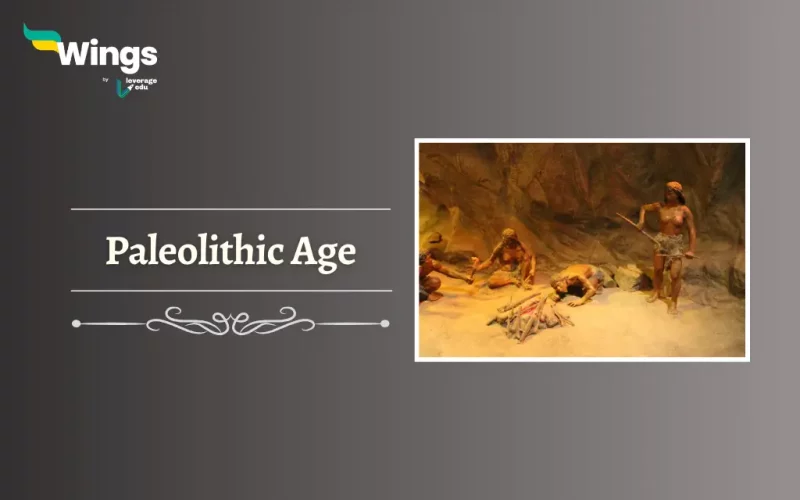The Paleolithic Age is the oldest section of the Stone Age, also called the Old Stone Age. It is a vast time of history when humans started using stone tools and developed their use from unfinished hand tools to more sophisticated tools being used for diverse purposes. Additionally, it was the age of hunters and gatherers who produced these tools for simple objectives. However, this period belongs to a time when human life records were scarce. The Paleolithic age was believed to end around 1200 BC. The Paleolithic age itself exists in various phases and has different exclusive features. Read on to learn more about the Paleolithic age!
Also Read: A Complete Roadmap To The Discovery Of Fire
Phases of the Paleolithic Age
Table of Contents [show]
The Paleolithic age can be divided into three phases of existence, based on the nature and usage of stone tools that existed during the time. The phases are as follows:
- Lower Paleolithic
- Middle Paleolithic
- Upper Paleolithic

Lower Paleolithic Age
This age is attributed to the time when stone tools were first used by humans.
- The first samples of these basic tools were discovered in Africa, a part of the Oldowan Tradition.
- In addition, these tools mainly consisted of choppers and scrapers and tools like hand axes were used to kill animals.
- This period also records a regulated use of fire.
Middle Paleolithic Age
This age belongs to the Mousterian culture where the existence of Neanderthals also connects.
- The remains of Neanderthals have been found in caves in Europe, North Africa, Palestine, and Siberia.
- Moreover, these were often found with fossilised evidence of fire usage.
- Furthermore, they were mammalian hunters and used animal skin, fur and bone for warmth and making tools and utensils.
- Flakes and handaxes were the most used tools at this time.
Also Read: Indus Valley Civilization: Time-Period, Culture & Excavation Sites
Upper Paleolithic Age
This is the age when Neanderthals were overtaken by modern humans and they slowly vanished from the surface of the earth.
- The new tools in trend during this time were blades, these were made twice as long as they were wide and had parallel sides.
- Additionally, blades themselves were used to develop many other tools.
- Moreover, people started to live in areas that were more like shelters with floors and windbreaks.
- Consequently, they finally came out of the cave and lived in settlements that were more like huts.

What are the 3 main characteristics of the Paleolithic Age?
The 3 main Characteristics of the Paleolithic Age are:
- They made simple stone tools such as flakes and hand axes.
- Moreover, they mastered the use of controlled fire for warmth and cooking.
- They lived in small nomadic groups that hunted large animals, such as mammoths, for food.
Also Read: Types of Vedas: Important Features & Details
Technological Advancements
Stone tools are the main technological advancements of the Paleolithic age.
- Moreover, the three phases of the Paleolithic age are in fact divided on the basis of the evolution of these tools.
- These people as hunters learned to divide their work as hunters, foragers and other roles.
- Additionally, humans of this age are deeply studied by Anthropologists to depict patterns of group hunting.
- Blade tools were introduced in the later Paleolithic period and these were made of bone, ivory, antler, wood and more.
- Towards the end of this age, humans had learned to make barbed harpoons and spear-throwers.

Cultural Structure
During this time, humans established shelters in settlements, created varied tools, even traded goods and services and also instituted social hierarchies and cultures.
- In addition, they also repeatedly travelled long distances to find more of their likes.
- This could not have happened without communication and therefore scientists have theorised that the earliest use of some form of language came into effect during this time.
- Furthermore, while studying the skeletons, the development of brain areas associated with speech was also noted by scientists.
- Thus, this led to cultural groupings, common morality and beliefs starting to seep into the society of early humans.
Relevant Blogs
| Bronze Age | Mesolithic Age |
| Major Climate Change after Ice Age | Arab Nationalism |
| All The Names of India Throughout History | Tribes of India |
| Gupta Empire | Post Mauryan Period |
That is how humans traversed along the long Paleolithic age learning and evolving in each of its phases and learning to become innovators and society builders. If you want to read more articles like this, you can visit our general knowledge page on Indian History!
 One app for all your study abroad needs
One app for all your study abroad needs















 45,000+ students trusted us with their dreams. Take the first step today!
45,000+ students trusted us with their dreams. Take the first step today!
